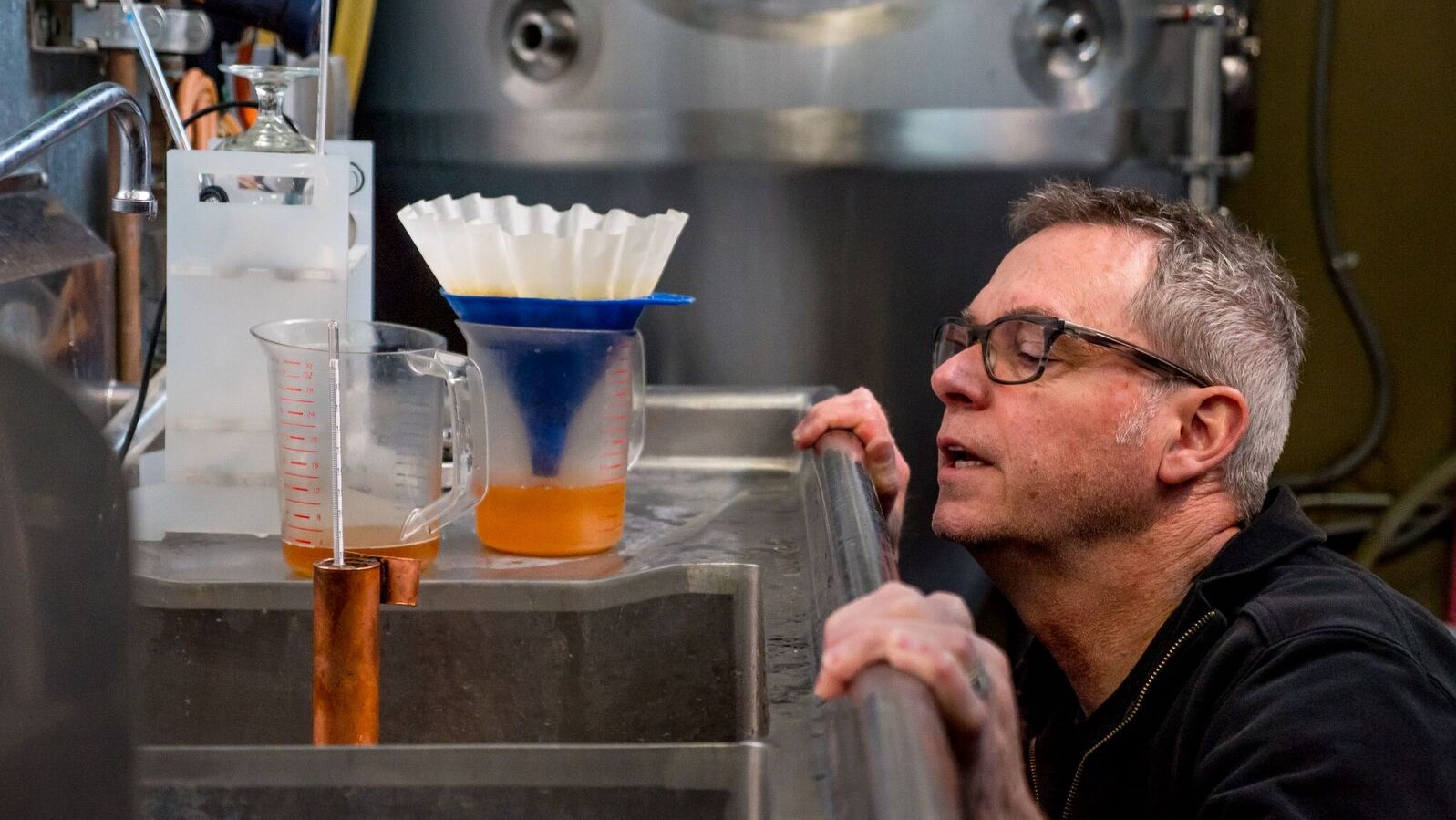Hoppy Saison: A Collaboration With Old Town Brewing
Bales and Alworth Collaboration with Old Town Brewing
Launch Party (including the mayor's staff!)
Wednesday, April 25, 5:30 pm
5201 NE Martin Luther King Jr Blvd
You may recall that a dispute between Old Town Brewing and the City of Portland boiled over last fall. That situation had a happy resolution, and in thanks, the brewery reached out to people who supported their cause to do some collaborations. Huck Bales, a prolific Twitterer, and I were paired up for one of these collabs (Rogue and Reverend Nat's were the others). A few weeks back we met with brewers at Old Town to come up with a concept. I had a bunch of esoteric suggestions (bière blanche de Paris, polotmavé, Japanese rice lager) and Huck suggested a classic English bitter--which everyone knows is one of my faves. But we ended up going with a hoppy saison.
The idea was to take the fruity character from the yeast and pair it with some good old fashion American late-addition and dry-hopping. Because Huck had suggested a bitter, we decided to use Maris Otter as the base malt and hit it with a little pop of Challenger hops at the start of boil. But we also included oats and wheat, which are typical in a rustic saison-style beer. (That they're also typical in a more modern form of beer is something we will attend to in due course.) Andrew Lamont, the head brewer at Old Town, came up with the package of late-addition (Sterling, Amarillo) and dry-hops (El Dorado, Azacca--and maybe one more?). It was fermented with Imperial's Rustic yeast strain.
On the day of the brew, Huck and I showed up right before mash-in and then pretended we were being helpful. (Brewer Kevin Burgess graciously let us stir the mash and add the hops.) Actually, Huck was helpful; he emptied the spent grain from the mash tun. He had been pretty interested in that, and I, a gentleman, didn't try to horn in and deprive him of any fun.
I haven't tasted the beer yet and can't speak to how well we pulled it off, but there was some thinking here beyond, "Let's do a hazy IPA with a saison yeast." Modern saisons tend to lean away from hops--and that's true in the US as much as Belgium. But there's no reason to think this would have been historically true, and indeed the landmark example, Dupont's, is notably bitter. Farmers would have used whatever they had, and since the beer was supposed to last through to the next harvest, I imagine they didn't spare the hop.
This photo, the cover photo, and some of the photos in the slideshow below were taken by Old Town Brewing's Jordan Wilson. If you wish to use any photos from this article, please contact me about whom to credit.
Many people coming new to the current hazy craze find it unusual and daring. Well, not entirely. For centuries, pillowy wheat beers could be found in Belgium and Germany. Some, like witbier and especially hefeweizen, are living dinosaurs of a once-hazy era. The use of oats and wheat to create haze is considered quite an innovation, but Belgians were doing this hundreds of years ago. I've referred to an invaluable text from the Belgian brewer Georges Lacambre who toured the world in the 1830s and 40s and documented all the styles he found. Many of them used wheat, oats, or both.
- Bières blanches de Louvain: "One always uses barley, wheat, oats..."
- Bière de Diest: another light wheat beer made with barley and oats. Lacambre recommended it for wet nurses.
- Bière de Hoegarde (precursor to modern witbier): "The grains used to prepare this beer are still barley, wheat and oats, which are mixed before milling in the proportions of five to six parts barley malt to two of wheat and one or one and a half of oats."
- Bières de Lierre: "The starchy materials used for the preparation of these beers are barley which is well-modified and moderately dried on the tourailles, and wheat and oats which are mixed with the malt in a ratio of six parts of barley to one of wheat and two of oats."
- Saison de Liège: This is the only saison Lacambre specifically calls out--and it has the kind of rusticity you expect from the style. "The grains typically employed to prepare these two kinds of beer are barley, spelt, wheat and oats; but a large number of brewers do not eploy barley or oats in winter, it is especially spelt that forms the basis of their production."
Some of these beers were aged and no doubt clarified over the months or years in the barrel. But it's a good bet that many--and the saison in particular--which Lacambre says was "drunk very fresh, usually after ten to fifteen days"--would have rated high on the old hazy-ometer.
All of which is to say that this recipe shines a light on how what we think of as new and innovative so often is not. When you taste this beer--and I hope you do--do not think of a hazy pale with saison yeast. Think instead of a rustic Belgian ale hopped in the manner of modern American beers. I have been meaning to get around to a beer like this for months (years?), and I'm really excited to see how it plays out. I await your judgment with keen interest,* so go have a taste next week. Better yet, come down for the launch. I think there will be a short, fun program.





__________________
*Of course, if it's sublime, Huck and I take full credit. If it is a noble failure, we'll blame it on Andrew. KIdding!